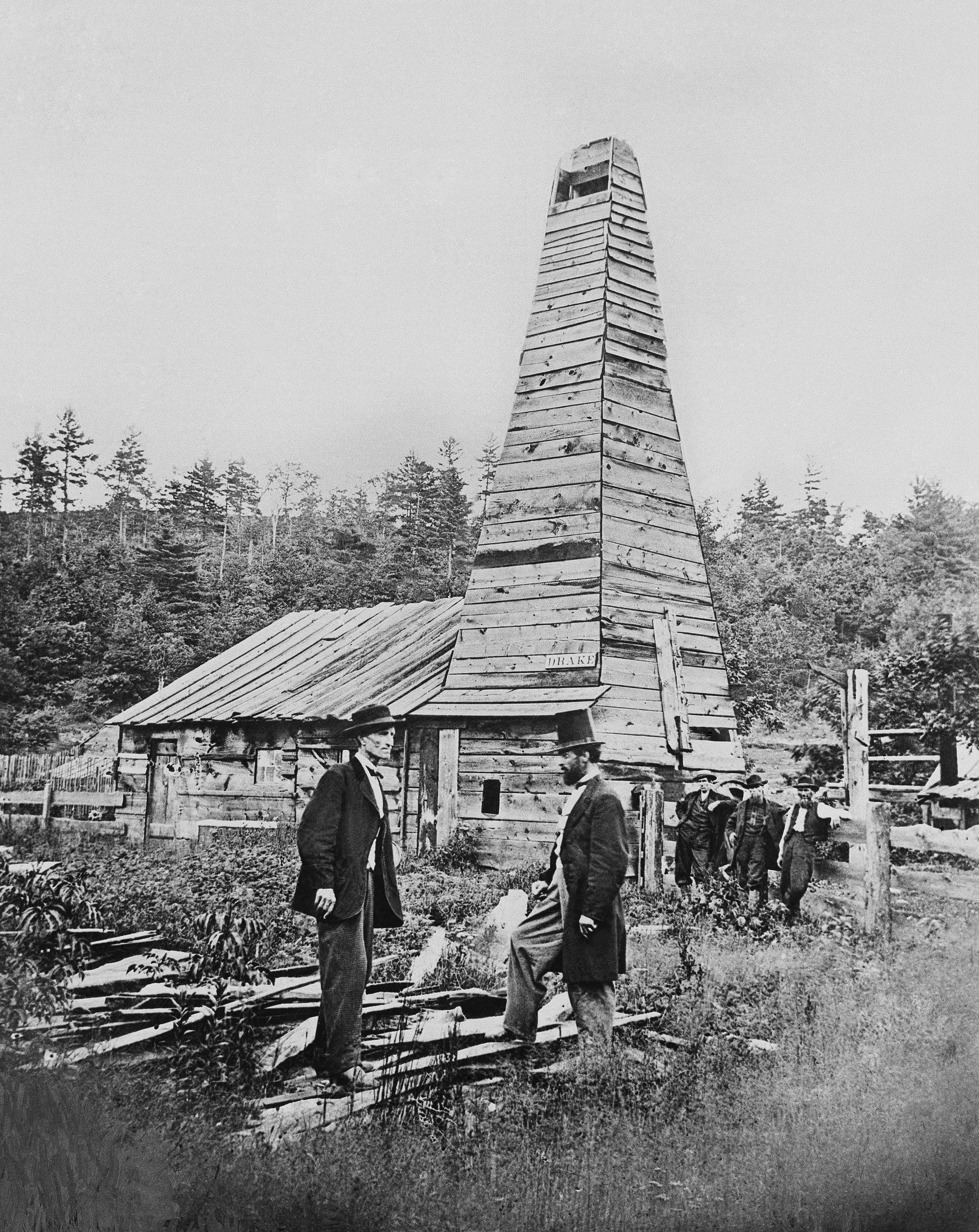
After Edwin Drake struck liquid gold in 1859, creating the first commercially successful oil well in Titusville, the commonwealth exploded with oil wells in an era unhindered by regulatory powers.
Gas wells followed the oil boom, but when once-lucrative wells lost economic viability, no longer producing the powerhouse hydrocarbons, owners abandoned them.
The numbers grew, creating a swath primarily from Greene County up, until the Pennsylvania Oil and Gas Act of 1984 put a metaphorical — and literal — cap on it, requiring operators to plug finished wells.
The open wells from before the 1984 regulation have sat decaying — some for a century — but efforts to plug them have intensified under Gov. Josh Shapiro’s administration, bolstered by federal funding.
And this month, an emergency well plugging brought Shapiro to Washington County to celebrate: it was the 300th well plugged since 2023, when he took office. Located in North Franklin Township, the well was leaking methane between two reservoirs in what will become an 89-acre park.
A recent freezing and unfreezing of funds has lawmakers cautious about the future, though U.S. Rep. Chris Deluzio (D-17) is focused on putting federal dollars into the effort.
“The Trump administration’s funding freeze is putting these efforts at risk,” he said. “Orphan well funding has since been unfrozen, but this uncertainty is putting this work, and the safety of our health and local environments, at risk.”
The well in Washington County is one of 27,000 abandoned or orphaned oil and gas wells identified by the state Department of Environmental Protection in need of plugging. However, academic projections put the actual number between 305,000 and 395,000, said Kurt Klapkowski, deputy secretary of the Office of Oil and Gas Management at the DEP.
In Southwestern Pennsylvania, many of those wells are close to businesses and homes, sometimes dangerously so, he said.
The wells carry the potential of contaminating drinking supplies with crude oil, methane, and brine escaping into aquifers.
But perhaps the biggest danger the wells post is methane leaks. An asphyxiant, methane can be flammable and even cause explosions. Wells contribute nearly 8% of the state’s total methane emissions, and methane is a known driver for climate change, almost 30 times as effective at trapping heat in the atmosphere as carbon dioxide.
In two years, Pennsylvania has plugged more wells than the previous 11 years combined, spending millions to do so. Contracting pluggers has cost the state an average of $70,000 to $100,000 per well in recent years.
Every time we plug a well, we’re doing right by public health, right by public safety, right by our farmers, right by our workers, and right by our communities,” Shapiro said during the news conference earlier this month in Washington County.
And despite concerns over federal funding for wells, the DEP is operating with the understanding that the $400 million total it’s expecting from the Infrastructure Investment and Jobs Act will continue to be available through 2030, with some funds potentially lasting longer because of a five-year obligation period, Klapkowski said.
“It's world-changing money in Pennsylvania when it comes to this issue,” Klapkowski said.
He said a “long-term goal here is to see significant, responsible funding put in place to continue this work in the future. Ideally it would be Pennsylvania funding.”
Cost was a point of contention at a Senate Appropriations Committee hearing in February as state Sen. Gene Yaw, chairman of the Senate Environmental Resources and Energy Committee, questioned the cost of plugging each well.
“We're not doing as much as we should be doing. We're not even close,” Yaw said in an interview with Next Generation Newsroom. “So, the fact we've done 300 wells, we should be talking about we've done a thousand wells or more.”
Yaw criticized the DEP’s use of lump sum contracts as opposed to time and materials contracts and suggested larger bid packages with more wells for contractors.
DEP Press Secretary Neil Shader said lump sum contracts were required since the initial phase of grant funding from the Infrastructure Investment and Jobs Act required 90% obligations of funds within 90 days of awarding.
That prevented the DEP from holding funds back for change orders, so the DEP chose to do lump sum contracts with change orders granted only in extreme circumstances, Shader said.
Now, the DEP is relying on a second phase of funding with a longer obligation period of five years. That means the DEP will be able to use time and materials contracts, Shader said. That longer obligation period also expands the DEP’s options for bid sizes with additional time for contractors to fulfill larger well contracts.
A grant program launched in October aims to reduce costs. Essentially a reimbursement program, well pluggers will get $40,000 for shallow wells and $70,000 for deeper wells or the actual cost to plug, whatever costs less.
The program only applies to orphan wells, abandoned prior to April 18, 1985, with no one legally responsible for plugging, which represent around 7,000 of the 27,000 identified wells.
In the 2025-26 budget, Shapiro proposed an additional $13 million in state funding for well plugging. In the current budget, the DEP received an additional $11 million.
There’s an economic benefit to the program too, state officials said.
“It's investment in our small businesses,” Klapkowski said. “Because a lot of these plugging contractors are small businesses, we think that this will lead to job creation and retention for these companies.”
The DEP plans to launch a well plugging training program later this year.
